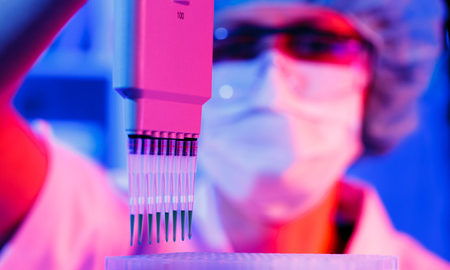Blood Stem Cells Studied with Time-Lapse Video

In what could prove to be groundbreaking research in “manufacturing” blood in the laboratory, scientists at the St. Jude Children’s Research Hospital in Tennessee have used time-lapse videos to study blood stem cells. The findings were revealed in the journal Nature Cell Biology.
Video Surveillance of Blood Stem Cells
Akin to private investigators, the scientists used video surveillance to identify the development of blood-forming stem cells, focusing particularly on identifying the cells that trigger this process. The findings will help pave the way for creating precursor cells in the laboratory that can differentiate into blood cells. In this way, the scientists hope to create donor blood in the laboratory.
Transplantable Lab-Grown Blood-Forming Cells
Wilson Clements, Ph.D., of the Department of Hematology at St. Jude explains that the findings will offer new insights into the development of hematopoietic (blood-forming) stem cells and expand the avenues of investigating precursor cells in the laboratory.
Blood Stem Cells
Blood stem cells are master cells that can differentiate into the various types of blood cells found in the human body. They play an important role in the treatment of blood cancers such as leukemia and other disorders of the blood such as sickle cell disease. Blood stem cells are also used to deliver gene therapy. The investigators hope that a better understanding of the development of blood stem cells will lead to the production of pluripotent stem cells in the laboratory to address the shortage of donors.
Blood Stem Cells Studied with Time-Lapse Videos
Time-lapse videos were used to better understand how blood-forming cells arise from the internal lining of developing blood vessels before birth. Certain endothelial cells become blood stem cells, and scientists want to better understand what triggers this conversion.
The team identified neural crest cells, which are found in the developing embryo’s spinal cord, to be the key mediators in the conversion of endothelial cells to blood stem cells. The researchers used time-lapse videos to study the migration of neural crest cells in zebrafish, which have a blood system that is very similar to humans. About 24 hours after the migration, the time-lapse videos showed that the neural crest cells had lined up along the endothelial cells in the developing aorta and switched on genes which would convert them to blood stem cells. The signaling proteins used by the cells remain unidentified, but adrenaline and noradrenaline have been eliminated as possible signals.
In further experiments, the team disrupted the migration of neural crest cells and blocked their migration to the aortic endothelium. This led to a blocking of the development of blood stem cells in the zebrafish that otherwise developed normally. The experiments have identified the previously unknown population of niche cells that trigger blood stem cell production in the developing embryo.
References:
- https://www.medicalnewstoday.com/releases/316858.php


